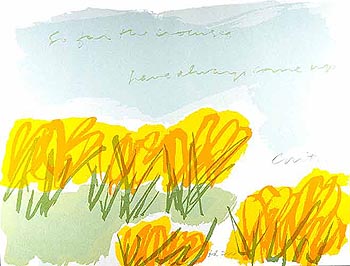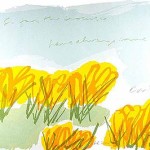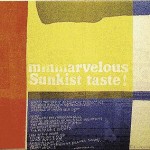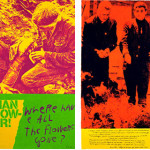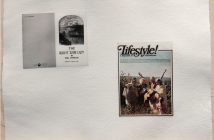These were the flash cards for resistance. Corita Kent began as an artist in a Roman Catholic religious order, until her outrageous reverence ("Mary Mother is the juiciest tomato of them all") proved too much for the prelates of nostalgia. She then, in 1968, made her way to Boston to create the serigraphs that now function as an illustrated history of what followed, a memory album of conviction.
But a melancholy has taken hold of them, like the rust stains from the tacks that once held the corners of these images - like lesser crucifixes - to the walls of the faithful. She began with the making of alphabets, collecting the instruments that she would deploy in the service of her outrage and hope. That "mmmarvelous Sunkist taste!" is an early exercise in the typography of immediacy; the only violence she is capable of is that which demands that attention be paid, as in the graphic compulsion of "Road Signs," made in 1969.
Hers is a pilgrimage for words in the face of what is unspeakable, as in the piecemeal fashioning of a clipped op-ed essay by Arthur Miller on Robert Kennedy's murder, or the frequent allusions to Walt Whitman's poetry from the hospitals of the Civil War: his discovery that "Agonies are one of my changes of garments" is as close to a motto as she will discover.
Many of the pieces here are vehicles for her to announce the witness of those whom she loved. In one, the Berrigan brothers, Daniel and Philip, are standing over the burning draft records at Catonsville, Maryland, purified by the colors of fire like the impervious children in Nebuchadnezzar's furnace.
In the 1969 print "Manflowers, " the tinted photograph of a wounded soldier with its inscription "where have all the flowers gone" prefigures the photomontage of 1970 by the Art Workers' Coalition where a color image of the slaughtered at My Lai has printed over it the phrase "And babies" rendered as both question and answer in a magnified red font.
Art stood up then, and for her part, Corita Kent cut the world into colors and reassembled it as it should have been.
But now, the record of the Berrigans and the death warrants they turned to ash is forty years old. There is another war, and Philip is dead. Many of these prints with their cursive catalogues listing the names of moral rebels now read like a prism of grave markers; so many gone, and so much struggle remaining.
She must have seen some of this coming. No darkness was ever rendered so brightly as in the image entitled "So far the crocuses have always come up," completed shortly before her death in 1986.
But there is one image closer to a last word, even without a date. Laid almost as an after thought in a flat display cabinet of scattered papers, a small water color wash brightens the air. It carries one clear trace of the future in the midst of all this past.
- Corita Kent, Come Up, silkscreen, 1985.
- Corita Kent, Sunkist, silkscreen, 1965.
- Corita Kent, Manflowers (left), Dan And Phil (right), silkscreen, 1968.
Breslin Fine Arts Gallery
Corita Art Center
"We Can Create Life Without War: A Retrospective Exhibit of the Works of Corita Kent," is one view at Breslin Fine Arts Gallery, located at 187 Main Street, East Greenwich, RI, until May 15.
All images are courtesy of Breslin Fine Arts Gallery and Corita Art Center

